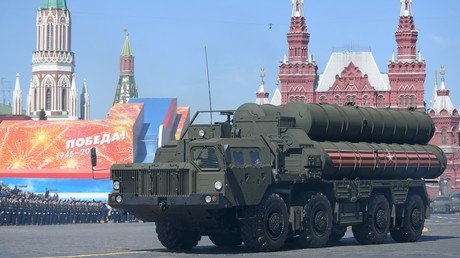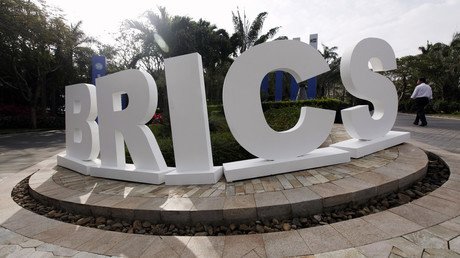India and the US will hold their first ‘two-plus-two’ dialogue intended to expand “global strategic partnership.” Whether it can help overcome the drift and uncertainty that has crept into bilateral ties is anyone’s guess.
The fate of the Indo-Pacific region hinges on this crucial question.
On September 6, US Defense Secretary Jim Mattis and Secretary of State Mike Pompeo are holding talks with Indian Foreign Minister Sushma Swaraj and Defence Minister Nirmala Sitharaman in New Delhi.
Hitherto, the US entered into two-plus-two talks only with close ally Japan, while India did so with both Japan and Australia. When it was announced by President Donald Trump and Prime Minister Narendra Modi in August 2017, the two-plus-two idea drew praise as an upgrade that could take the India-US equation to the next level. To observers, it appeared to signal that the early confusion introduced by the erratic Trump and the US’ geostrategic incoherence was finally being cast aside.
However, this much-heralded dialogue had to be postponed twice and it took more than one year from commitment to implementation, suggesting unresolved gaps and irritants in relations.
India is miffed with Trump’s strategic inattention towards it and cagey about his potential abandonment of the US’ historic role in the Indo-Pacific region. The frequent turnover epidemic in the Trump cabinet and the American president’s deployment of his top officials to the North Korea dialogue process have sidelined India in the US’ Asia agenda.
Neglecting India, whose size and potential entail long-term geopolitical benefits for the US, while obsessively prioritizing on North Korea to score a political brownie point that it “is no longer a nuclear threat,” seems to confirm apprehensions in New Delhi that Trump has no grand strategy or vision.
Arguably, Washington could obtain much more in terms of regional stability and balance-of-power by investing in and strengthening India in Asia rather than in expending so much political capital on attempting to prise North Korea apart from its all-weather ally China.
The ongoing trade war of the Trump administration, where India has not been spared, as well as threats from Washington that New Delhi could face economic sanctions for buying advanced Russian anti-missile weapons systems and oil from Iran, add to the disappointment in India that the hoped-for ‘Trump dividend’ when he won the US election in late 2016 has not yet materialised.
The popular wisdom in New Delhi is that Trump is such an irascible politician who views every country, including the US’ treaty allies, as a foe that it is an achievement in itself to stay out of his crosshairs. But avoiding Trump’s bad rap is not enough.
While Modi is a staunch nationalist who balks at any hint of appeasement, India has high stakes in the US relationship and cannot afford the cumulative accomplishments of the last two decades to be lost. With bilateral trade worth over $120 billion, a vibrant Indian-American community of nearly 3.5 million people, and a range of mechanisms to cooperate on counter-terrorism, intelligence-sharing, military exchanges, and stability in the Indo-Pacific, the US remains a permanent factor in the way India determines its national interests and its foreign policy.
Keeping this bigger picture in mind, India sought to be conciliatory and has catered to Trump’s infamous transactional calculus. Since October 2017, India has been importing American crude oil for the first time and has given assurances that it will provide more market access to US exporters to reduce the not-so-massive $25 billion-odd trade surplus it enjoys with the US.
In response to the US push urging India to sign fresh pacts for “additional and long-lasting defence cooperation,” New Delhi has shed past inhibitions and might be inclined to ink the Communications Compatibility and Security Agreement (COMCASA), which would open the door for the US to sell encrypted communication systems to the Indian military.
Modi knows that nothing satisfies Trump more than a country ordering and acquiring more American products and services that generate profits for US companies and jobs for American workers.
But Modi also has red lines and there is a limit to how far he would go to satisfy Trump’s neo-mercantilist itch. Totally ceasing purchase of Iranian oil, jettisoning the Chabahar port project being co-developed with Iran, or discarding the Russian-made S-400 missile system for less capable American alternatives like the Patriot will not wash in an India where preserving ‘strategic autonomy’ and an independent foreign policy has sacred status.
India is not a malleable client that will do the bidding of the US. It is an independent actor whose geography and level of economic and military power drive it to prefer strategic linkages with Russia and Iran. On specific issues, it can also hedge its bets and team up with China.
In the backroom negotiations over prickly American demands, New Delhi has conveyed to Washington that it will not buckle under Trump’s ultimatums but will find a path to retain its strategic options. India wants the US to understand its compulsions on core national security choices and not harass it with threats of sanctions.
If the so-called ‘grownups’ in the Trump cabinet like Defence Secretary Jim Mattis had final say on these matters, they might conclude that there is an intrinsic advantage to the US from India getting more powerful without encumbrances. Just letting India grow economically and militarily and not posing hurdles to its rise as an emerging power should work wonders for the US as democratic India could, whether intentionally or circumstantially, act as a counterbalance to authoritarian China that is flexing muscle across the Indo-Pacific.
Trump’s unilateral moves to hem in China with a trade war and his intensification of ‘freedom of navigation operations’ (FONOPS) of the US Navy in the South China Sea are in themselves insufficient to check China’s impending preponderance in the Indo-Pacific.
Modi ideally wants Trump to realise that there is no alternative to multilateral coalition-building to control China’s ascent. Singly, the US is no longer capable of deterring or containing China. How craftily India plays the China card to convince the US holds the crux for the ‘two-plus-two’ dialogue and management of the friction that has developed between the world’s two major democracies.
The other nettlesome matter which needs sorting between the US and India is Pakistan and its pernicious role in fomenting terrorism and destabilization in Afghanistan. New Delhi has applauded Trump’s cutoff of foreign military aid and ostracisation of Islamabad for its sponsorship of jihadist forces in Afghanistan. But many in India are cynical about Washington’s direct peace talks with the Taliban and the potential of Pakistani interests being given primacy in any final settlement of the drawn-out war in Afghanistan.
READ MORE: US strips Pakistan of $300mn in anti-terrorism aid
Forebodings in New Delhi about the US accommodating China and leaving India in the lurch in the Indo-Pacific, or of the US rewarding Pakistan to exclude Indian influence in Afghanistan, are not newfound. When the Barack Obama administration took over from George W. Bush in 2009, a similar wave of lament had coursed through Indian foreign policy. Mistrust of American intentions and opportunism has left lingering doubts in India about how reliable the US is as a strategic partner.
But the fact that India and the US have soldiered on in spite of such misgivings and disagreements and reached the current stage of ‘two-plus-two’ dialogue means the two sides still expect mutual gains from each other.
Trump’s ‘my way or the highway’ attitude has indeed upset the applecart, but efforts are underway to revive confidence. Carefully calibrated reciprocal policy adjustments and respect for sovereign choices can keep the bilateral engine humming in the future. This requires sagacity on both sides, especially from a US which looks disoriented about what kind of Asia it really wants.
Like this story? Share it with a friend!
The statements, views and opinions expressed in this column are solely those of the author and do not necessarily represent those of RT.




